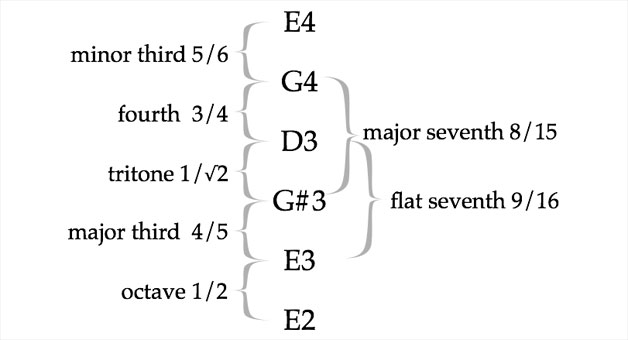Mastering Challenging Intervals Part I – Half Steps
 This article is the first part of a series on challenging saxophone intervals. To see the other articles which comprise this series to date, please click here.
This article is the first part of a series on challenging saxophone intervals. To see the other articles which comprise this series to date, please click here.
While it’s great to improve our technique using scales, arpeggios, written etudes, and memorized patterns, it’s also important to get down to the nitty-gritty of what it is that’s tripping up our fingers. Ya know, those trouble spots that make our playing sloppity-slop-slop.
The reason for these finger fumbling technical pitfalls is a lack of muscle memory and strength when it comes to those particularly pesky intervals between notes on the horn.
Although it might not be that exciting to listen to, the best way to address these troublesome intervals is to isolate the two notes and go back and forth between them very slowly, so that you can savor the feeling of your fingers making the exact movements necessary to move back and forth between the two notes cleanly. As you familiarize your fingers with a vivid tactile image of what it feels like to alternate between those two notes, then you can increase the speed, focusing intently on the feeling in your fingers, hands, and really, the rest of your body – including the embouchure.
Ideally, you would pick an interval, say, half-steps, and alternate between every half-step interval on the horn (in other words, the theme to “Jaws” in all twelve keys). However, for those of us who might not have the time or patience to go through every single half-step interval, I’ve gone ahead and isolated the ones that I feel are the most difficult to master.
Many of these intervals can be practiced two possible octaves, but the point is really to get those fingers familiar with the tough spots.
Here’s the sheet music for the half-step intervals I’ve isolated as being particularly challenging.
Master the tough intervals throughout the horn, and you’ll find yourself one step closer to making the horn a natural extension of your body.
Photo by Ethan Hein






Mastering Challenging Intervals Part II – Whole Steps | Best. Saxophone. Website. Ever.
August 1, 2011 @ 6:03 am
[…] our first installment of this series, we established the importance of practicing transitioning between notes that are […]
Mastering Challenging Intervals Part II – Whole Steps | About Tenor, Alto, Soprano And Bariton Mouthpieces For Saxophone Kit
November 29, 2011 @ 8:02 am
[…] our first installment of this series, we established the importance of practicing transitioning between notes that are […]
Mastering Challenging Intervals Part II – Whole Steps :- Horne.
May 23, 2012 @ 6:38 am
[…] our first installment of this series, we established the importance of practicing transitioning between notes that are […]